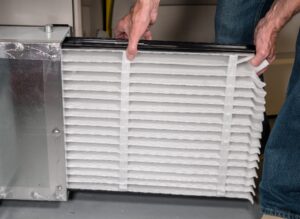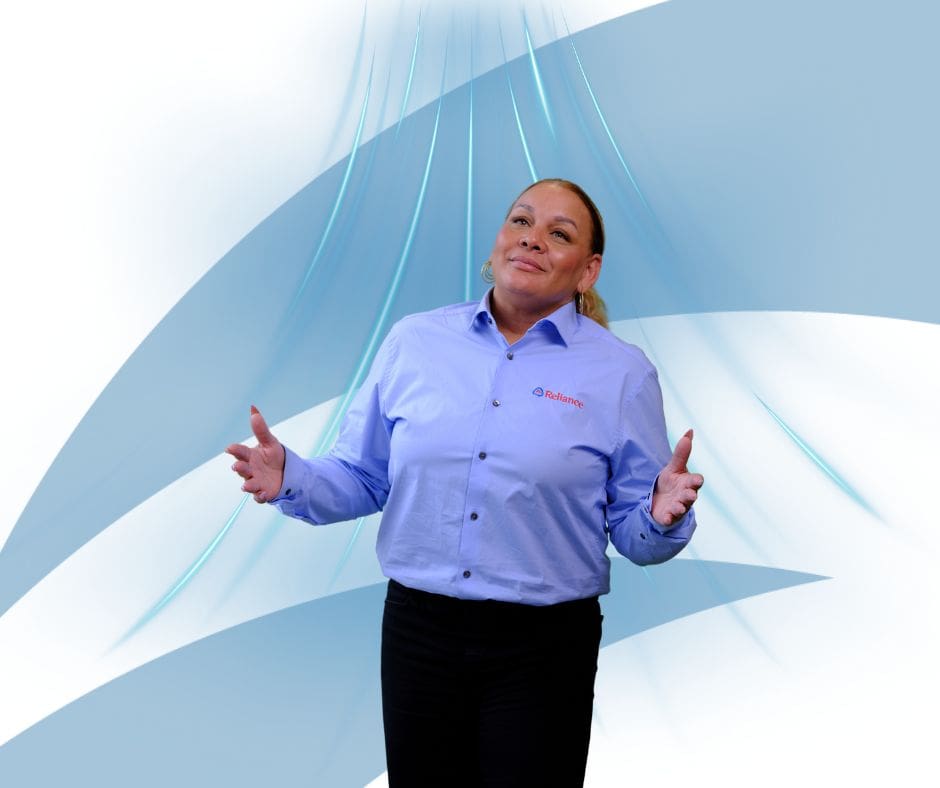Now more than ever, our home is more than just the place where we wake and sleep – it’s our warm shelter, our safe space, our office, our virtual get-together venue. But with more time spent inside, the quality of the air we are breathing should be top of mind.
We’ve put together your essential guide to help improve your in-home air quality. The first step is choosing the right filter for your HVAC system.
How to Choose the Right Filter for Your HVAC System
Air filters work to filter the air that moves in and out of your HVAC system. This helps to improve the quality of your indoor air and helps make sure your heating and cooling system doesn’t get clogged with dust and debris. Consider these three factors that influence the degree to which each filter can clean the air in your home:
1. Minimum Efficiency Reporting Value or MERV rating
On a scale of 1–16, this indicates a filter’s ability to capture different sizes of airborne particles while air is flowing through your HVAC systems. Generally, filters on the lower end of the scale remove fewer pollutants, while filters with a higher MERV rating are more efficient at trapping smaller, airborne particles that can contribute to poor in-home air quality.
Home Comfort Tip: Opt for a filter model that offers you the highest MERV rating, while still fitting into your budget. And consider purchasing more than one filter at a time. That way, you won’t be scrambling to purchase a replacement filter the next time your current one needs to be changed. Plus, purchasing in multi-packs often delivers a cost-savings.
2. Construction and Material
The material composition and construction type dictate the MERV rating, which is indictive of the degree to which the filter can catch the smaller and often more health-implicating particles. These factors will also influence how often you should replace your filter.
Some systems offer technological features, like UV light that attacks microorganisms on a molecular level to deactivate and destroy them. Such sanitizing systems are based on the same technology as those used in healthcare settings to improve indoor air quality, and sterilize mold, bacteria, viruses and allergens from the air as it cycles through the HVAC system.
A higher MERV rating also comes with a greater potential of restricting airflow, which can cause your furnace to work harder and could increase your energy bills.
Home Comfort Tip: Consider using a medium-range MERV-rated filter with the addition of a UV light system that gets installed inside the return air duct and runs 24/7.
Selecting a New Air Filter
| Popular Types | Merv Rating | Details | Replacement Frequency |
| Fiberglass | 1-4 | Inexpensive (<$10); catches up to 20% of particles down to 3 microns, thus not recommended for homes where people have allergies | Monthly |
| Electrostatic | 6-8 | Affordable in standard sizes ($5–$50); self-charging fibres attract and trap smaller particles | Monthly – Every 3 months |
| High Efficiency Particulate Air (HEPA) | 17-20 | Meets international standards for quality and efficiency; trap 99.97% of particles down to 0.3 microns, including dust, pet dander, pollen, mold and other allergens and irritants Meets international standards for quality and efficiency; trap 99.97% of particles down to 0.3 microns, including dust, pet dander, pollen, mold and other allergens and irritants | Annually |
| Ultraviolet (UV) Light Systen | N/A | Uses the same wavelengths as the sun to aid in the prevention of mold, bacteria and virus growth | Annually |
3. Disposable vs. Reusable
Some models of air filters are reusable and provide dependable service over the lifetime of your furnace—that is, assuming you follow the recommended frequency for cleaning. And, while disposable filters are a less expensive option, particularly for low-to-medium–MERV rating models, reusable versions often offer a lower total cost of ownership over the life of the furnace, as you need only replace reusable filters every three years or more.
DIY: How to Replace Your Furnace Filter
1.) Make sure your furnace is turned OFF.
2.) Locate the filter housing on your furnace. This is different for each model, but you can normally find it between the air intake and the furnace.
3.) Open the compartment door and slide the filter out. Compare the size and type of replacement filter with the old one to ensure it’s the right size.
4.) Slide the new or cleaned filter in place with arrows pointing towards the furnace in the direction of airflow.
5.) Secure the compartment cover.
6.) Turn your furnace back ON.
Watch a step-by-step how-to change your furnace filter video here.
Whether you’re sheltering at home or simply enjoying the comfort of your own personal space, it’s important to maintain clean air flowing indoors. Consider your options for improving the quality of your in-home air supply, while increasing the longevity of your heating and cooling system, starting with choosing the right air filter and installing a UV light.
At Reliance®, we’ve been keeping Canadian homes comfortable for more than 50 years. We continue to be here for you today. Learn about the precautionary measures we’re taking to help keep our customers and Team Members safe.









